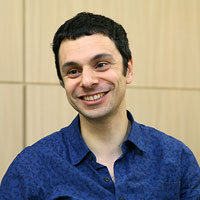View this article in another language
- 한국어
- English
- 日本語
- 中文
- العربية
- Español
- Français
- Deutsch
- Pусский
- Tiếng Việt
- Indonesian

By Tim Alper
Could the PyeongChang 2018 Olympic and Paralympic Winter Games transform the country into a winter tourism hotspot? What else is there to see and do in Korea at this time of year?
It's worth stating that Pyeongchang-gun County is one of the most outstanding parts of Korea, particularly when the winter sets in. It's nestled in the heart of the Taebaek Mountains, a range that runs like a spine down the east coast of the Korean Peninsula. From December, Pyeongchang-gun and its surrounding country becomes a source of delight for adrenaline junkies. Well over 80 percent of the terrain here is mountainous, with vast networks of slopes suitable for skiers and snowboarders of all levels.
If you're like me, however, and not blessed with a natural penchant for winter sports, you will be happy to hear that there are plenty of ways you can enjoy the mountains of Pyeongchang without donning a set of skis. The waterways of Gangwon-do Province freeze over, allowing adventurous walking enthusiasts like me to explore gorges, ravines and spectacular rock formations from a unique vantage point: the frozen surface of the river.
While leafless deciduous trees offer little winter cheer, the Woljeongsa Forest Trail in Odaesan National Park is an evergreen path all year long. This area truly comes into its own following snowfalls. Treading upon glistening virgin snows here is a rare treat. Some 1,800 conifers line the path all the way up to Woljeongsa Temple, which dates back to the 600s, replete with an octagon stone pagoda and a seated bodhisattva statue that both date back to Silla (57 B.C. - A.D. 935).
Winter is also a great time of year to indulge in food-inspired travel. Seafood lovers adore this season, a time when giant crabs can be consumed in great quantities at seaside resorts. I prefer to lose the crowds, though, so instead I plump for poultry at the Chungcheongbuk-do Province town of Chungju.
Chungju’s neighborhood of Suanbo is one of the best places in the country if you're in search of pheasant, or ggweong sae. These birds mate and tend to their young in the warmer months, so farmers and hunters prefer to leave them alone in both summer and spring. However, they're at their fattest and most flavorful in the winter. So, just as is the case in woodier parts of Western Europe, pheasant is considered a quintessential Chungju winter ingredient.
In my native U.K., pheasant is invariably oven-roasted and is a traditional post-Yuletide treat. As traditional Korean cuisine doesn't make use of ovens, Westerners like me are unfailingly dazzled at how people here consume this bird. Elsewhere in Korea, it can often be hard to find, but Chungju natives breed scores of pheasants and have found multifarious uses for them in the kitchen. Locals are partial to serving it up in dumplings, preserving it in kimchi, cooking it in savory pancakes, barbequing it on skewers and even eating it raw.
Suanbo is also famous for its hot springs, although hot springs can actually be found all over Korea. I find few things as enjoyable on a cold day as relaxing outside in the countryside in a steaming hot tub of naturally warmed water, looking out at a snow-covered landscape. Suanbo’s springs are particularly noteworthy, as they are thought to be over 30,000 years old, and come from a source buried 100 m beneath the ground. The waters reach the surface at temperatures of up to 53 C (127 F), passing through mineral-rich rock on their way up, supposedly giving them restorative qualities.
If, like me, you live in Seoul, sometimes you may prefer to look for winter destinations a little closer to home. Seoul’s outdoor ice skating rinks provide plenty of family-friendly fun, and they pop up at sites all over the capital region from December to February.
My favorite of all of these can be found outside City Hall. I find it amazing to see this area, which in summer is a green, grassy park, transform into a moonlit bed of ice when December arrives. The evening air here unfailingly fills with the delighted shrieks of mitten-clad infants taking their first, tentative steps around the rink, a sound to warm even the coldest of hearts on a midwinter night.
Tim Alper is a writer and columnist, originally from the U.K., who has lived in Korea for more than ten years.